Abstract
A mixed infection of Bacteroides fragilis and Fusobacterium necrophorum was resistant to treatment with penicillin even though a pure F. necrophorum infection could be successfully treated with penicillin. Since B. fragilis alone did not produce infection, these results indicate that B. fragilis can protect F. necrophorum from penicillin in vivo. The extent of protection afforded by a strain of B. fragilis was related to its level of resistance to penicillin. Only a few cells of B. fragilis were required in the initial bacterial injection. Moreover, protection was demonstrated when B. fragilis cells were injected as late as 24 h after the F. necrophorum cells. Protection of F. necrophorum from penicillin by B. fragilis was also demonstrated in vitro.
Full text
PDF
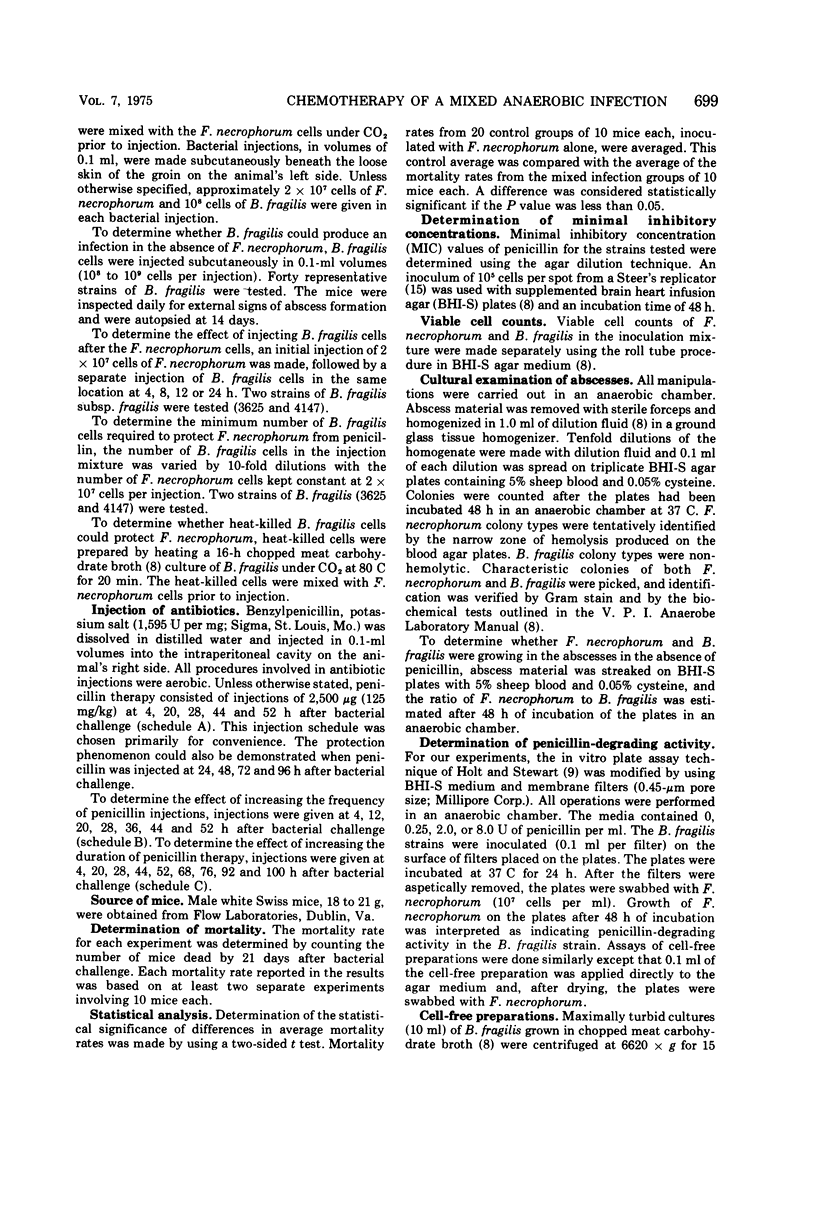
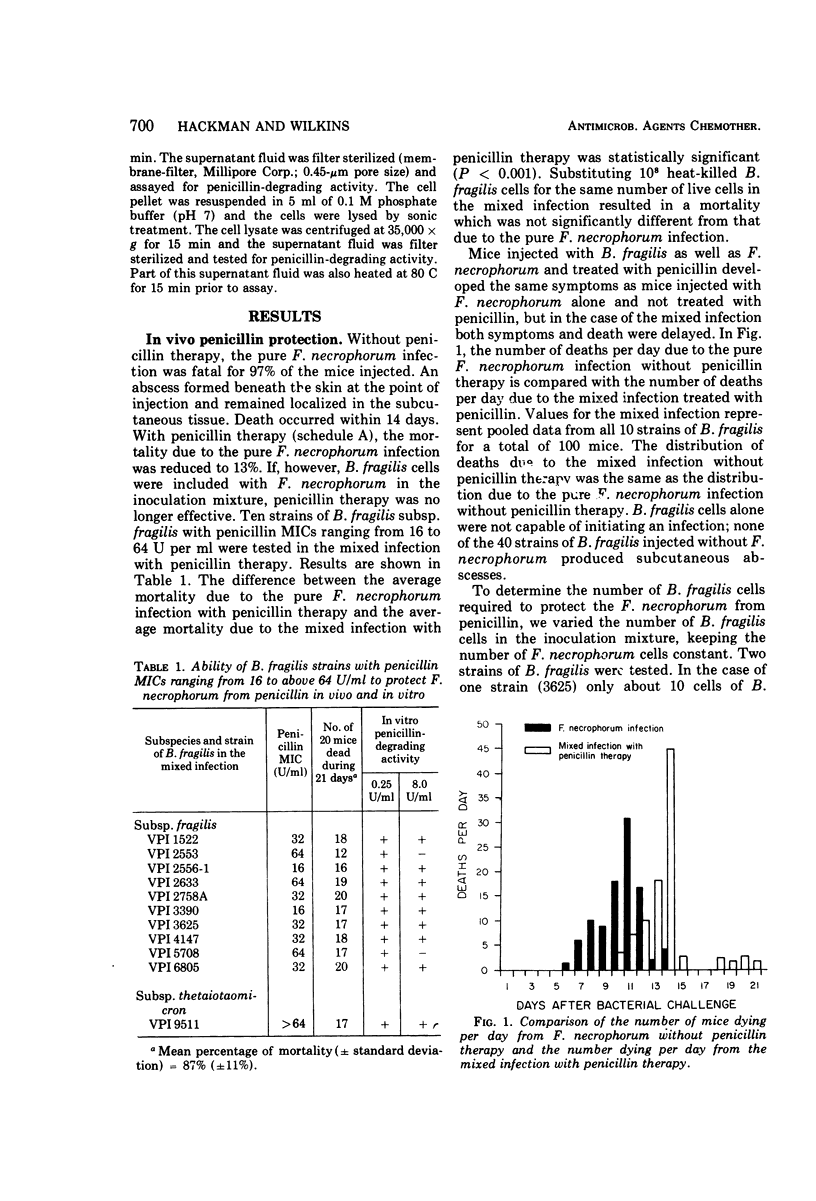
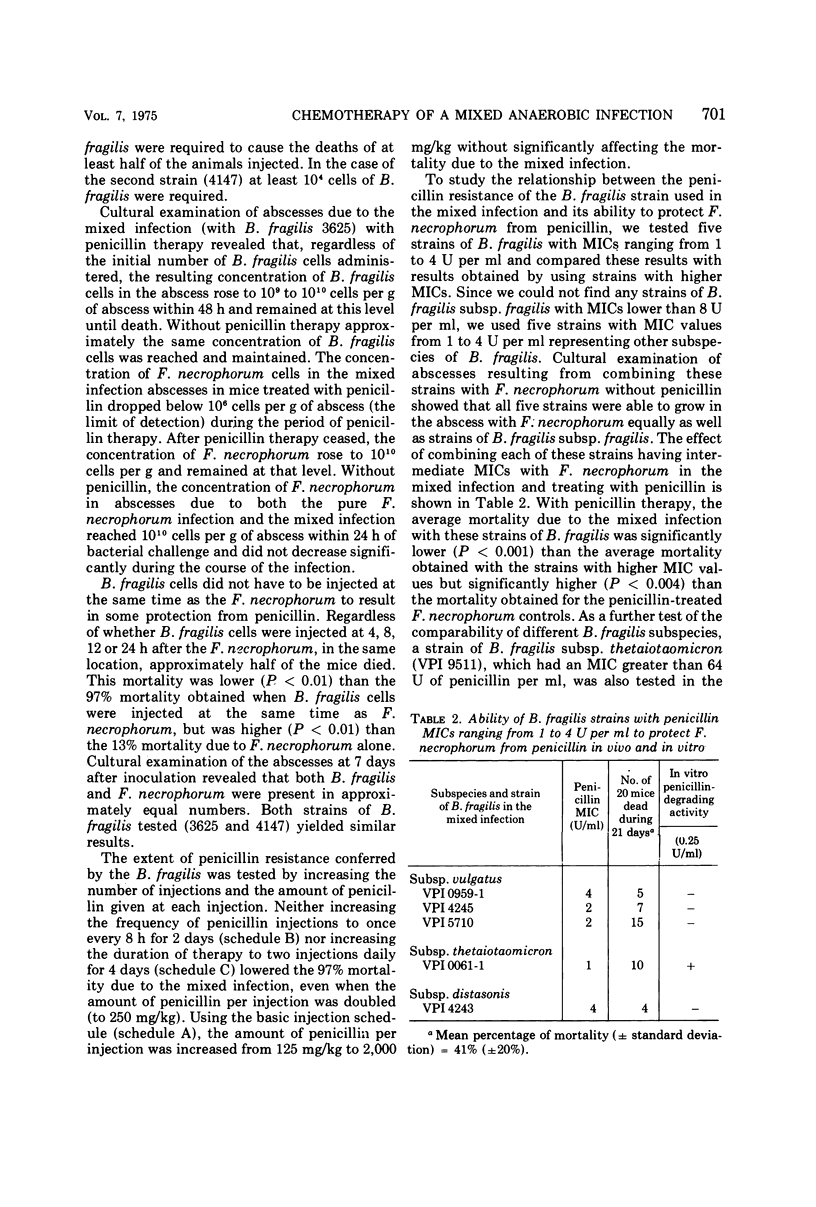

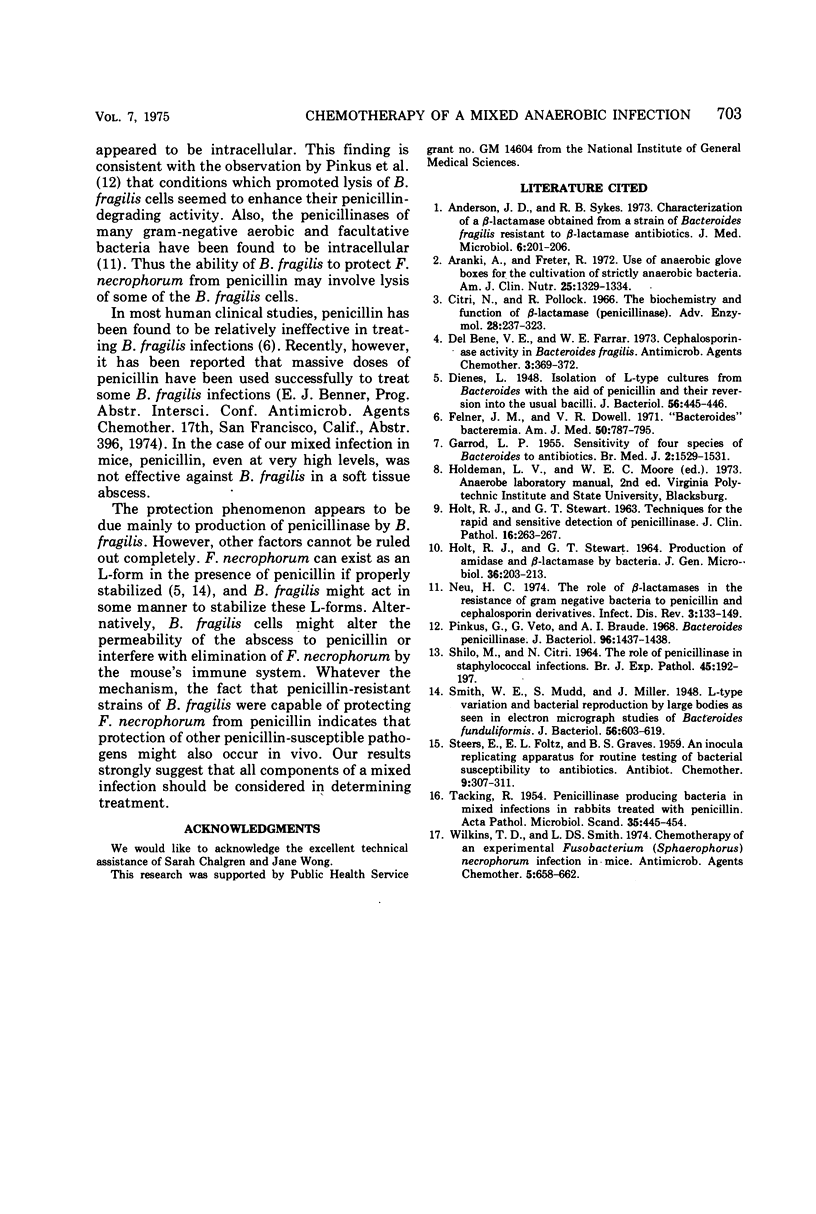
Selected References
These references are in PubMed. This may not be the complete list of references from this article.
- Anderson J. D., Sykes R. B. Characterisation of a -lactamase obtained from a strain of Bacteroides fragilis resistant to -lactam antibiotics. J Med Microbiol. 1973 May;6(2):201–206. doi: 10.1099/00222615-6-2-201. [DOI] [PubMed] [Google Scholar]
- Aranki A., Freter R. Use of anaerobic glove boxes for the cultivation of strictly anaerobic bacteria. Am J Clin Nutr. 1972 Dec;25(12):1329–1334. doi: 10.1093/ajcn/25.12.1329. [DOI] [PubMed] [Google Scholar]
- Citri N., Pollock M. R. The biochemistry and function of beta-lactamase (penicillinase). Adv Enzymol Relat Areas Mol Biol. 1966;28:237–323. doi: 10.1002/9780470122730.ch4. [DOI] [PubMed] [Google Scholar]
- Del Bene V. E., Farrar W. E., Jr Cephalosporinase activity in Bacteroides fragilis. Antimicrob Agents Chemother. 1973 Mar;3(3):369–372. doi: 10.1128/aac.3.3.369. [DOI] [PMC free article] [PubMed] [Google Scholar]
- Dienes L. The Isolation of L Type Cultures from Bacteroides with the Aid of Penicillin and Their Reversion into the Usual Bacilli. J Bacteriol. 1948 Oct;56(4):445–456. doi: 10.1128/jb.56.4.445-456.1948. [DOI] [PMC free article] [PubMed] [Google Scholar]
- Felner J. M., Dowell V. R., Jr "Bacteroides" bacteremia. Am J Med. 1971 Jun;50(6):787–796. doi: 10.1016/0002-9343(71)90187-2. [DOI] [PubMed] [Google Scholar]
- GARROD L. P. Sensitivity of four species of bacteroides to antibiotics. Br Med J. 1955 Dec 24;2(4955):1529–1531. doi: 10.1136/bmj.2.4955.1529. [DOI] [PMC free article] [PubMed] [Google Scholar]
- HOLT R. J., STEWART G. T. PRODUCTION OF AMIDASE AND BETA-LACTAMASE BY BACTERIA. J Gen Microbiol. 1964 Aug;36:203–213. doi: 10.1099/00221287-36-2-203. [DOI] [PubMed] [Google Scholar]
- HOLT R. J., STEWART G. T. Techniques for the rapid and sensitive detection of penicillinase. J Clin Pathol. 1963 May;16:263–267. doi: 10.1136/jcp.16.3.263. [DOI] [PMC free article] [PubMed] [Google Scholar]
- Pinkus G., Veo G., Braude A. I. Bacteroides penicillinase. J Bacteriol. 1968 Oct;96(4):1437–1438. doi: 10.1128/jb.96.4.1437-1438.1968. [DOI] [PMC free article] [PubMed] [Google Scholar]
- SHILO M., CITRI N. THE ROLE OF PENICILLINASE IN STAPHYLOCOCCAL INFECTIONS. Br J Exp Pathol. 1964 Apr;45:192–197. [PMC free article] [PubMed] [Google Scholar]
- Smith W. E., Mudd S., Hillier J. L-Type Variation and Bacterial Reproduction by Large Bodies as Seen in Electron Micrographic Studies of Bacteroides funduliformis. J Bacteriol. 1948 Nov;56(5):603–618. doi: 10.1128/jb.56.5.603-618.1948. [DOI] [PMC free article] [PubMed] [Google Scholar]
- TACKING R. Penicillinase-producing bacteria in mixed infections in rabbits treated with penicillin. 2. Studies on penicillinase-producing coli- and pyocyaneus-bacteria. Acta Pathol Microbiol Scand. 1954;35(5):445–454. [PubMed] [Google Scholar]
- Wilkins T. D., Smith L. D. Chemotherapy of an experimental Fusobacterium (Sphaerophorus) necrophorum infection in mice. Antimicrob Agents Chemother. 1974 Jun;5(6):658–662. doi: 10.1128/aac.5.6.658. [DOI] [PMC free article] [PubMed] [Google Scholar]


